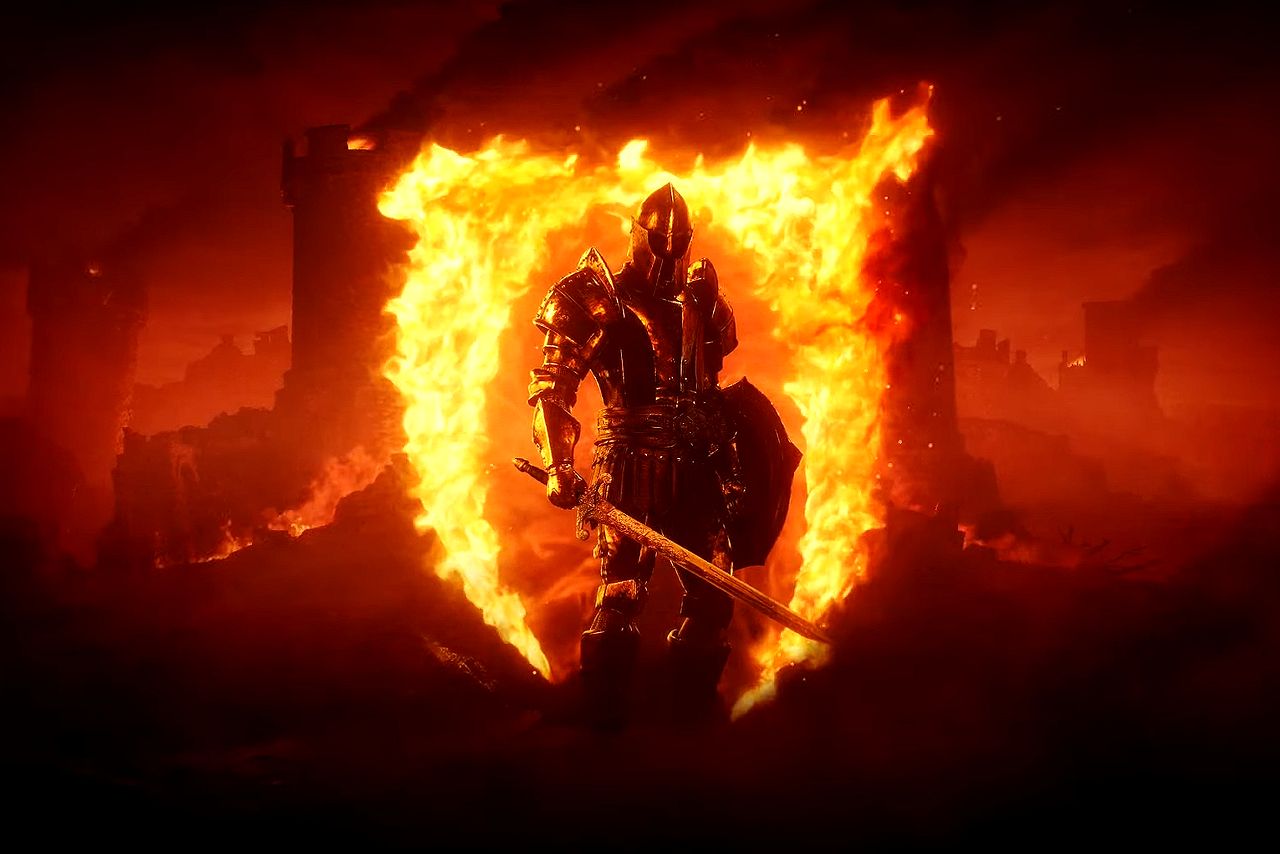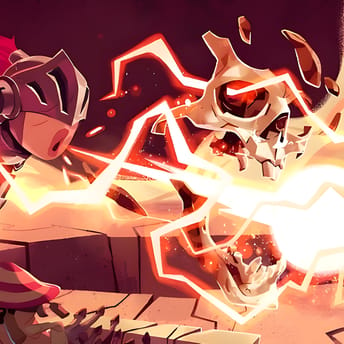
Game Remake vs Remaster Explained: Key Differences and Gaming Impact
The sudden release of The Elder Scrolls IV: Oblivion Remastered shook both gamers and the video game industry. Bethesda quietly launched the remaster with almost no announcements, and its quality was so high that it immediately climbed to the top of the Steam charts.
The game costs $50 and has been moved to Unreal Engine 5, yet it is still marketed as a remaster rather than a remake. So, let’s examine the key differences between remakes and remasters—two terms often used interchangeably, yet referring to fundamentally different approaches to game modernization and preservation.

Remaster and Remake Surge in Modern Gaming
In the mid‑2010s, publishers released remasters mainly to fill in the gaps in the release calendar (usually when internal studios were late with major new releases). By 2025, the situation had changed: a large number of classic AAA games had either a remaster or a remake, collecting record sales and becoming hits on streaming platforms (Twitch, YouTube, etc.).
There are several factors to this. Firstly, the paying audience of nostalgic gamers has grown (especially for PlayStation 2 and Xbox 360 titles). Secondly, technologies like ray tracing and AI-powered texture upscaling (DLSS, FSR, XeSS) give developers a chance to show long‑familiar scenes with a visual level that was considered unattainable 10-30 years ago.
Moreover, game design hasn’t been stagnant—some games have aged not only visually, but also conceptually. The trend of remakes and remasters provides an opportunity not just to improve graphics, but to modernize gameplay as well.
And finally, the production risk is lower: the plot, level design, and community have already stood the test of time, which helps to save on marketing. As a result, we are witnessing a golden age of video game remasters and remakes, where classic titles are reborn with upgraded visions, expanded cross-platform availability, and bring publishers profits comparable to original releases.
Remaster vs Remake vs Port vs Reboot: What’s the Difference?
What is a remaster?
A remaster is a cosmetic, yet thorough update of existing assets. Artists enhance texture resolution, modelers clean up character geometry, and developers add modern shaders and optimize the game for modern devices. The engine, AI logic, and object placement usually remain untouched, so the moment‑to‑moment experience is nearly identical to what players enjoyed a decade ago. For example, Stronghold: Definitive Edition.
What is a remake?
A remake is a fresh, ground‑up re‑imagining of the original. The basic plot framework, key characters, and recognizable mechanics stay, but the game engine is new, while the control scheme, narrative delivery, and visual effects are rebuilt as if the game were being developed today. Developers might tweak level layouts, rewrite dialogue, add side quests, or even rethink the overall balance and gameplay ideas. For example, Black Mesa.
What is a port?
A port is a technical move from one platform to another, with little in the way of graphical upgrades or new features. Its main purpose is simply to give players on a different console or operating system access to the game. For example, Horizon Zero Dawn for Windows (2020).
What is a reboot game?
A reboot is a narrative reset, undertaken when a publisher decides to wipe the slate clean. It often shifts the universe’s time, characters, and core rules, though it may sprinkle in nods to earlier installments. Unlike a remake, the goal isn’t to retell the original story but to create a fresh entry point for a new audience. For example, Doom (2016).

Remake and Remaster: Main Differences
Remakes and remasters differ not only in the level of investment but also in how audiences perceive them. A remake is presented as a new game based on familiar source material, so players expect full AAA quality and are willing to pay the standard $60 price (or even more now). A remaster, by contrast, feels like an upgraded classic—buyers look for it at a fair price or as a paid upgrade.
From a development standpoint, a remake is almost the same as building an entirely new game: the engine must be adapted, fresh animations recorded, cutscenes rebuilt, balance tested, and difficulty tuned. A remaster, meanwhile, usually stops at environment art touch‑ups, performance optimization, and a few extra UI options.
The community reaction also differs: a remake often sparks debate over canon and the re‑imagining of beloved scenes, whereas a remaster is typically welcomed as a celebration of preserving historical authenticity.

Evolution of Remakes and Remasters (2000-2025)
Early pioneers (2000-2014)
Capcom’s 2002 Resident Evil remake on GameCube proves a from‑scratch overhaul can outshine the original, while Metal Gear Solid: The Twin Snakes (2004) shows how cinematic re‑imagining can refresh a cult classic. As HD consoles arrive, compilation remasters like God of War Collection (2009), Halo: Combat Evolved Anniversary (2011), and ICO & Shadow of the Colossus Collection (2011) usher in the HD age, teaching publishers that higher‑resolution textures and smoother frame rates alone can fuel nostalgic sales.
Safe bets and surging Interest (2015-2020)
Remasters like Uncharted: The Nathan Drake Collection and Dark Souls Remastered show that even modest upgrades can be profitable when the source material is handled with respect.
Resident Evil 2 and Final Fantasy VII Remake hit the market. Players are amazed at how boldly the developers overhaul mechanics without losing the originals’ spirit.
Highs and lows (2021-2023)
Dead Space Remake wowed fans and critics alike, while the hastily assembled GTA: The Trilogy – Definitive Edition left players fuming. Side by side, they remind us of the trend’s two biggest pitfalls: shipping a game full of bugs or playing it so safe that the magic gets lost.
Setting the standard (2024-2025)
Age of Mythology: Retold proves that a twenty‑year‑old strategy game can feel fresh for a new generation, while the remake of Silent Hill 2 (2024) raised the bar for psychological horror by pairing modern sound design with careful preservation of old scenes. And the Oblivion remaster, as the cherry on top, shattered all expectations, proving that even the most beloved classics can still surprise players.

Technologies Behind Game Remakes and Remasters
Game engines and procedural tech in modern remakes
Unreal Engine 5 has introduced Nanite, which automatically optimizes geometry, and Lumen, which delivers realistic global lighting in real time. For remakes, this means no more counting polygons: entire levels can expand, packing the screen with objects that would have been trimmed away in the past.
Improved physics engines enhance immersion and visuals: walls crumble, furniture splinters, and every loose object reacts the way you expect. It’s the kind of hands‑on chaos the originals could only dream about.
Ray tracing and hybrid lighting upgrades for remasters
Hardware ray tracing makes re‑releases especially enticing. Fans don’t just notice sharper textures; they feel natural light and shadow that give familiar scenes a whole new atmosphere. In Dead Space, for instance, soft reflections amplify the atmosphere of the Ishimura’s tight corridors.
AI upscaling and temporal reconstruction in game remasters
Machine‑learning algorithms are a godsend for remasters, boosting old texture resolutions without months of manual repainting. The time saved can be poured into extra models, refreshed cutscenes, or better onboarding tutorials, all upgrades that players actually notice.
Animation overhauls and motion capture in remakes
Modern remakes often replace dated, scripted animations with fresh motion‑capture works. The result is more expressive characters, livelier cutscenes, and a presentation that meets today’s standards.
UI, control, and accessibility enhancements in modern remasters
Modern remakes don’t just look better, they feel better. You get fully remappable controls, UIs that scale to any screen, and accessibility options that let more people jump into the game without friction. Classic games stay true to their roots while welcoming everyone to the party.
Spatial sound and audio remastering
Technologies such as 3D Audio and Dolby Atmos let teams completely redesign a game’s soundscape. Audio becomes a core pillar of the atmosphere.

Why Game Remakes and Remasters Sell: Economics of Nostalgia
Psychologists describe the “nostalgic impulse” as a desire to return to a safe and pleasant past during times of uncertainty. The gaming industry translates that impulse into numbers: remasters provide a steady cash flow for publishers. Remasters tend to sell longer than new IPs; even a year and a half after launch, a remaster can suddenly climb back into a platform’s top 10 thanks to a modest 30% discount.
For remakes, the main KPI isn’t immediate profit, but rather the re‑capitalization of the brand. A new release boosts sales of merchandise, action figures, soundtracks, and upcoming mobile spin‑offs. At the same time, developers get a second chance to refine the design, fix flaws from the original, and prepare the audience for future sequels. However, success depends on execution: low-effort remasters can backfire, while high-quality remakes set up future hits.
Successes and Failures of Game Remasters and Remakes
Successful transformations
Paper Mario: The Thousand‑Year Door on Switch increased battle frequency, streamlined side quest routes, and added subtle new animations, all while respectfully preserving the signature paper aesthetic. Players received not just a prettier version of the classic, but a tighter, more accessible one that helped expand the fan base.
Creative courage
Resident Evil 4 radically reshaped narrative tension, added a new questline with Luis, deepened character chemistry, and pushed for a more aggressive combat style. That boldness paid off with record-breaking sales and a renewed conversation around the entire franchise.
Mistakes from the beginning
GTA: The Trilogy launched with glaring visual bugs: rain effects covered half the screen, and broken collision logic disrupted story missions. The reputational damage forced the publisher to offer the original versions back to players in an attempt to restore trust.
Missed expectations
Croc: Legend of the Gobbos Remaster featured charming new models but failed to fix its sluggish, inertia-heavy controls and lack of checkpoints. As a result, reviewers called it archaic, despite the visual improvements.

Digital Preservation of Gaming History Through Remakes and Remasters
When the renowned Spec Ops: The Line was pulled from digital storefronts due to an expired music license, the gaming community was reminded how easily classics can vanish. In this sense, remasters and remakes are not just commercial ventures—they’re also a form of digital preservation.
For older titles with licensed music or external IPs, recycling the content is often the only legal way to bring them back to market. However, legal obstacles may arise: rights to characters, engines, or assets are frequently split between multiple entities. Spec Ops is unlikely to be remade: ”Because it was a brutal, painful development & everyone who worked on it would eat broken glass before making another. Also it didn’t sell”. This was a response from Walt Williams, writer at YAGER at the time, to a question about a sequel, but the point stands.
Still, team-driven initiatives like GOG Preservation and independent video game museums are already partnering with publishers to help maintain access to historic titles, while developers are increasingly depositing source code with platforms like Software Heritage.
Remakes and Remasters: Future Trends
OG seasons and the live‑service model
The return of older maps like Verdansk in Warzone and the ‘OG’ seasons in Fortnite shows a clear trend toward nostalgia-driven content. We’ll likely see remakes of the first seasons in other games soon—a way for developers to monetize nostalgia without halting ongoing live-service operations.
VR adaptations
Mixed reality platforms are becoming more accessible. Immersion could give classic games a second wind, turning familiar stories into fresh experiences through presence alone.
Better licenses
Extended music licensing agreements that cover both streaming and long-term game preservation could emerge, helping to protect games from being lost due to expiring rights.

Remakes and Remasters FAQ
What is a remastered game?
A remastered game is the original title rebuilt with higher‑resolution textures, updated audio, and modern platform support while keeping core gameplay and content essentially the same.
What’s the difference between a reboot and a remake?
A reboot discards previous continuity and starts the franchise over with new canon, characters, or tone; a remake retells the same story and settings of one specific game, updating visuals and mechanics but staying within the original canon.
Remake vs reimagining: what’s the difference?
A remake closely follows the blueprint of the source game. In contrast, a reimagining keeps only key themes or characters and freely changes story beats, levels, and mechanics, effectively reinventing the experience.
What does it mean when a game is remastered?
“Remastered” means the developers have refreshed an existing game, improving graphics, audio, and performance, so it runs and looks better on newer hardware without altering its fundamental design.
Why Remakes and Remasters Matter in 2025 and Beyond
Remasters and remakes have established themselves as a full-fledged pillar of the industry: they combine commercial gain, creative reflection, and cultural archiving. For publishers, this is a way to minimize risks; for developers, it’s a chance to correct the shortcomings of the past; for players, it’s an opportunity to relive classic stories with technological comfort.
In the coming years, the trend will not slow down: technology makes it cheaper, while the audience ages along with their favorite series. That’s why the golden age of remakes and remasters is likely to be a long era of reinterpreted legacy.
Preservation is no longer just a passion project for digital archivists—it’s becoming a shared responsibility between developers, publishers, and players.













